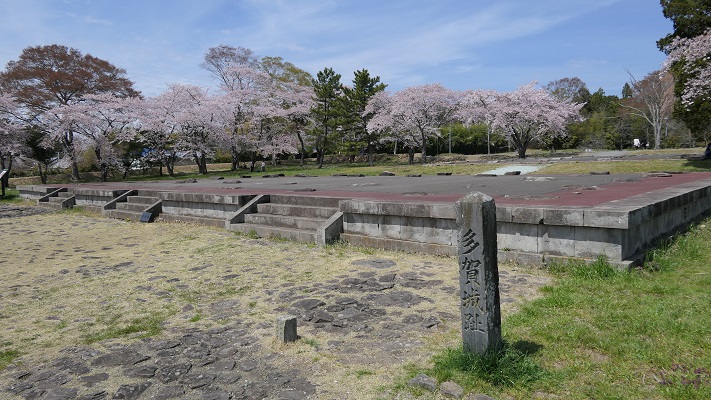
Location and History
多賀城は、「城柵」と呼ばれた政府の事業拠点の代表的なものです。城柵は、古代に朝廷が東北地方を支配するために設置されました。当時北東北には、「蝦夷」と呼ばれた朝廷に服さない人たちがもともと住んでいました。蝦夷は、朝廷の支配下にあった古代日本人とは違う言語を話し、その一部はまたアイヌ民族の先祖になったと言われています。
Taga-jo was one of the representatives of official defense sites called “Josaku” which were placed for the governance of Tohoku district by the central government in the Ancient Ages. Originally, people called “Emishi”, who were not subject to the government, lived in the north of Tohoku at that time. They spoke a different language from the ancient Japanese under the government, and part of them were also said to be ancestors of the Ainu tribe.
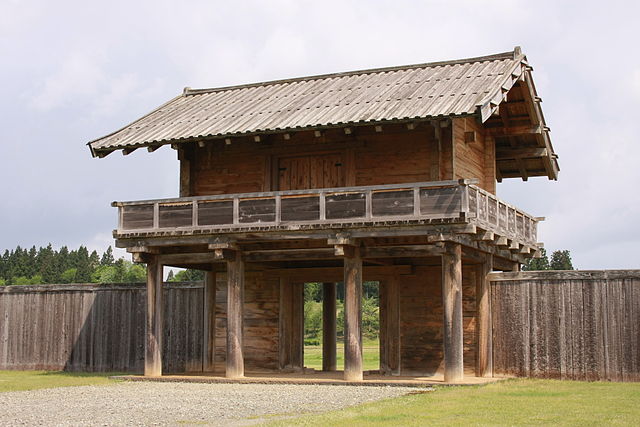
朝廷は領域拡大を図るため、東北に領民を移住させたり、「蝦夷」の人たちをも臣民として定住させたりしました。しかし、蝦夷はしばしば朝廷に反乱を起こしました。城柵は、城としての機能だけでなく、政庁や居住としての機能をもった複合施設でした。多賀城は、主要な城柵の一つであり、朝廷と蝦夷との境界近くに設置されたのです。
The government aimed to spread its domain, so it tried to relocate people there, and to accommodate “Emishi” people as its subjects. However, Emishi often rebelled against the government. Josaku were complex sites not only for castles, but also for government districts and resident facilities. Taga-jo was the primary site among the other Josaku which was near the border between territories of the government and Emishi people.
多賀城と8世紀の主な城柵の位置(The map of Taga-Jo and other major Josaku in the 8 century)
724年の設立から9世紀くらいまでに、多賀城は3回作り直されました。その間、まず762年に大改修後、780年に蝦夷の襲撃を受け、869年には貞観地震の被害を受けました。その後、通常は国府として使われたのですが、必要なときには軍事拠点として活用されました。そして1337年に、南朝の陸奥将軍府が他の地に移転したとき、ついに多賀城の歴史は終わったのです。
From its creation in 724 to around the 9th century, Taga-jo was rebuilt three times. During that time, it was renovated in 762, suffered from the attack of Emishi in 780 and the 869 Sanriku Earthquake. After that, the site was usually used as a provincial capital, but sometimes used as a military base when necessary. When the General’s Outpost in Mutsu by the Southern Court at this site was moved to another in 1337, the history of Taga-jo ended at last.

Features
多賀城跡は、現在主に2つの部分からなります。一つは政庁跡であり、丘の上に施設の中心として存在していました。そこには建物や柱の基礎がアスファルトに覆われた形で残っています。
The ruins of Taga-jo now mainly consist of two parts. One of them is the ruin of the government district which was the center of the site on a hill. It has a lot of foundations of buildings and columns covered with asphalt.

よって、過去にはその場所がどのような姿だったのか想像することができます。そして、そこから多賀城の外郭南門に通じる大きな道がつながっています。
So you can see and imagine how the site was in the past. There is a large road which goes down to the ruins of the south gate of the outer wall.

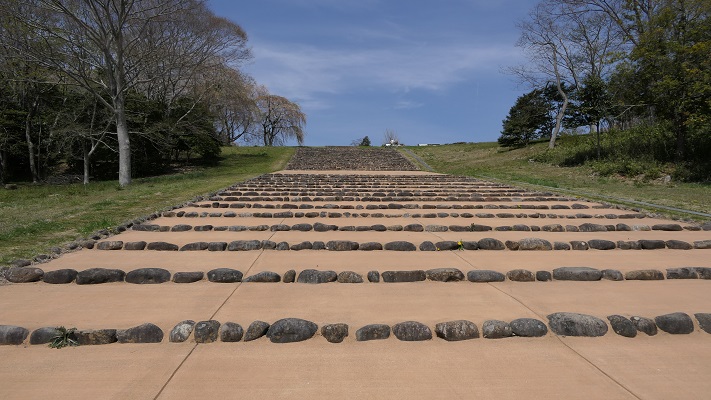
もう一つは多賀城碑で、多賀城の歴史の一端を語るものです。それは表面に文字が刻まれた石碑であり、762年の大改修が完成したのを記念して作られたと書かれています。
The other is the Taga-jo Monument which describes part of Taga-jo’s history. It is made of stone with letters engraved on it. It says that it was made due to the first renovation being completed in 762.

この碑は、江戸時代初期に南門跡周辺で発見され、その当時からその地で覆堂に収納されています。石碑は扉越しに見学することができます。また、近くにある東北歴史博物館では、そのレプリカも見ることができます。
It is found around the south gate ruins in the first Edo period, and contains a sheath house there from that time period. You can see the monument through the door of the house, and can also see the replica of it at the Tohoku History Museum nearby.
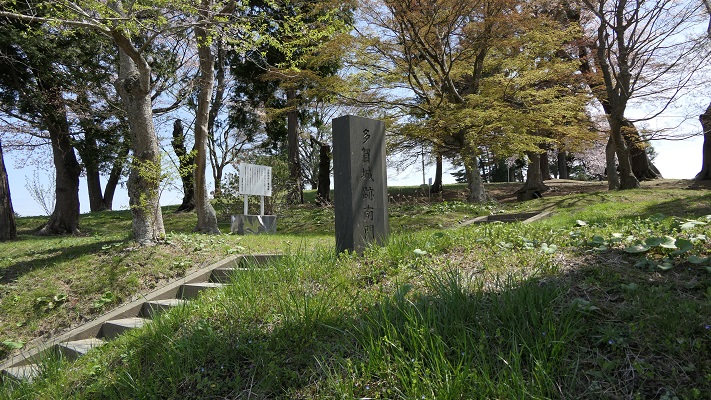
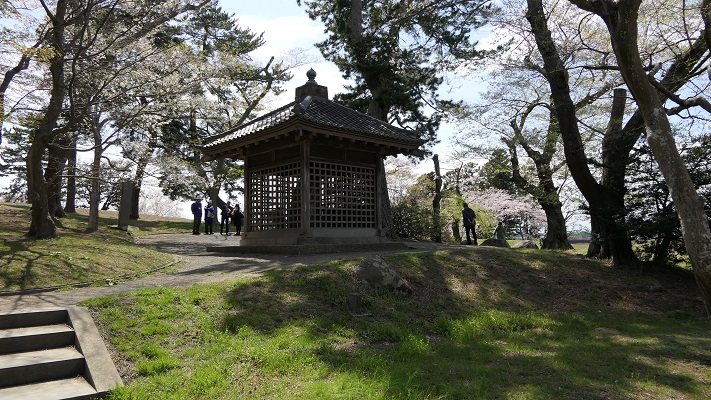
Later Life
多賀城跡は、石碑により江戸時代から全国に知られていました。しかしながら、歴史家の中には、いくつかの疑念から石碑は偽物ではないかと言っている人もいます。それは遺跡にとっては重大問題であり、なぜならこの石碑はこの遺跡が「多賀城」と呼ばれるための唯一の確かな証拠とされているからです。
The Taga-jo ruins have been known around the whole country for the monument since the Edo period. However some historians say the monument might be a fake and have some questions. That was a big problem for the ruins, because the monument is supposed to be the only certain proof that can call the ruins “Taga-jo”.

第二次世界大戦後、遺跡の主要な部分が発掘されました。その結果はおおむね石碑に書かれていることと一致しました。現在の定説ではこの石碑は本物とされています。発掘の成果をもって、遺跡は1966年に国の特別史跡に指定されました。
After World War II, the primary areas of the ruins were excavated. The results mostly match what is written on the monument, now the established theory says it is genuine. With the achievement of the excavation, the ruins were designated as a national special historic site in 1966.
My Impression
多賀城の政庁跡は、九州の大宰府政庁跡によく似ています。そのイメージは、私たちが普段想像するところの城とは異なりますが、多賀城は古代の城として様々な側面を持っていたのです。
今(2019年)から数年後に外郭南門が復元されるそうです。そのときにまた多賀城を訪れてみようと思います。
The ruins of the government district looks like that of Dazai-fu government district in Kyushu. It doesn’t look like our simplest understanding of what a castle is. But Taga-jo had many perspectives which was a style of ancient castles.
I have heard that the south gate of the outer wall will be restored several years from now (2019). I hope to visit Taga-jo again then.
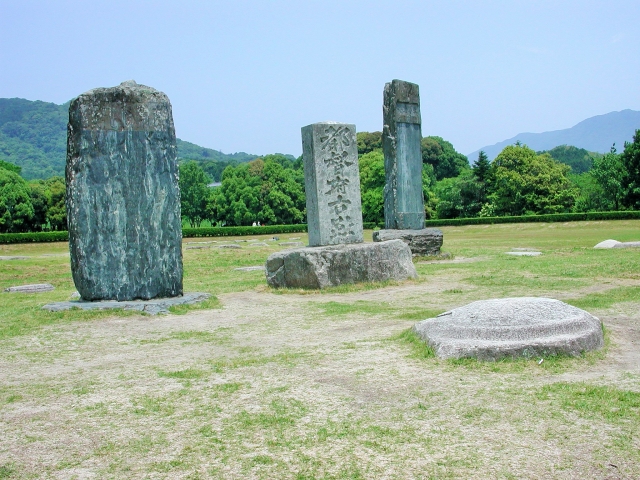
How to get There
JR国府多賀城駅から歩いて10~15分程です。駅の近くに東北歴史博物館がありますので、是非一緒に訪れてみてください。
東京から国府多賀城駅まで:東北新幹線に乗って仙台駅まで行き、東北本線に乗り換えてください。
It takes about 10 to 15 minutes on foot from the JR Kokufu-Tagajo station. It is a good idea to visit the Tohoku History Museum just near the station as well.
From Tokyo to the station: Take the Tohoku Shinkansen super express to Sendai st., and transfer to the Tohoku Line.
Links and Refferences
・多賀城市観光協会(Tagajo Tourism Organization)
・「蝦夷と城柵の時代」熊谷公男編、吉川弘文館(Japanese Book)
